Editor's note: This text-based course is a transcript of the webinar, Dialectical Behavior Therapy (DBT) Skills For Occupational Therapy Practitioners Working With Adolescents, presented by Amy Andersen Yamaoda, MA, OTR/L, PMH-C.
Learning Outcomes
- After this course, participants will be able to list the basic tenets of DBT and the characteristics of adolescent clients who may benefit from DBT-based intervention.
- After this course, participants will be able to identify strategies for incorporating DBT skills into OT interventions with adolescents and the benefit of recognizing how DBT and OT align.
- After this course, participants will be able to apply a DBT skill within an OT intervention to support the occupational participation of an adolescent client, given a case study.
Introduction
As an occupational therapist deeply entrenched in the realm of dialectical behavior therapy (DBT), I'm thrilled to delve into its application for practitioners working with adolescents. My journey through this therapeutic approach began in the trenches of community-based mental health and evolved into navigating hospital-based programs, where I witnessed firsthand the transformative power of DBT.
Let's lay some groundwork. Our focus today revolves around a set of clear objectives. By the end of this session, participants will adeptly articulate the fundamental principles of dialectical behavior therapy and delineate the key traits of adolescent clients ripe for DBT-based interventions. Furthermore, they will discern practical methodologies for seamlessly integrating DBT skills into adolescent occupational therapy sessions. Understanding the congruence between DBT and occupational therapy is paramount; participants will glean insights into this synergy. Through a comprehensive case study, we'll demonstrate how DBT skills can be wielded within an occupational therapy framework to bolster the occupational engagement of adolescent clients.
Before we dive in, it's essential to acknowledge some assumptions. This course presupposes a foundational understanding of DBT. For those seeking to bolster their knowledge, supplementary resources outlining various DBT skills are available for reference. However, we'll briefly touch upon the essence of DBT, exploring its theoretical underpinnings and practical applications as a precursor to our discussion.
Overview of DBT
Dialectical behavior therapy (DBT) stands as a pivotal branch of cognitive behavior therapy meticulously crafted by Marshall Linehan to tackle the complexities of borderline personality disorder (BPD). At its core lies the biosocial theory, initially conceptualized to elucidate the intricate nature of BPD. Central to this theory is the notion of emotion dysregulation, a hallmark characteristic of individuals grappling with BPD.
Emotion dysregulation manifests as an amplified emotional sensitivity, wherein individuals exhibit heightened reactivity to stimuli.
Biosocial Theory
- Characteristics of Emotional Dysregulation
- Heightened emotional sensitivity
- Increased reactivity
- Slow return to baseline
(Linehan, 1993)
With heightened emotional sensitivity, the thresholds for reactions become strikingly low. Individuals grappling with emotion dysregulation often display heightened reactivity, characterized by more extreme responses and elevated arousal levels than the average person. Following these intense reactions, there's a gradual return to baseline, signifying a slow descent from the heightened emotional state. This prolonged period of heightened arousal contributes to individuals remaining in a state of emotional intensity for an extended duration.
Over time, this heightened state can exacerbate an individual's sensitivity to subsequent emotional stimuli, further intensifying their emotional responses. As illustrated in Figure 1, at the core of this phenomenon lies a biological dysfunction within the emotion regulation system.
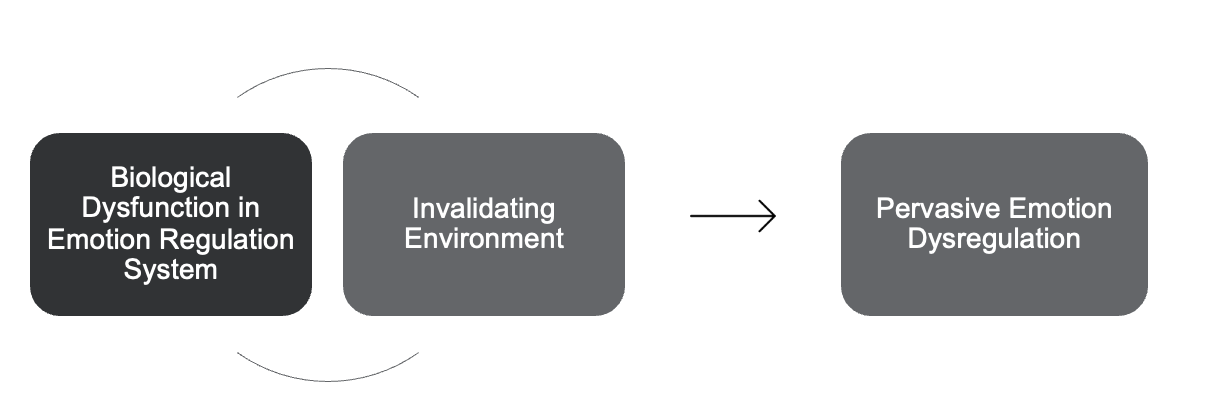
Figure 1. Biological dysfunction within the emotion regulation system (Marra, 2005).
The origins of heightened emotional sensitivity can stem from various sources, ranging from genetic predispositions to early-life experiences such as trauma, attachment issues, or loss. These biological and environmental factors intertwine to shape an individual's emotional landscape, laying the groundwork for emotion dysregulation within the framework of DBT.
Consider a scenario where an individual grapples with emotional and sensory sensitivity, struggling with simple tasks like getting changed in the morning. In such instances, the caregiver's response plays a pivotal role. Whether intentionally or unintentionally, caregivers may invalidate the individual's experiences, dismissing their emotions or reactions as irrational or unwarranted. This invalidating environment fosters a sense of disconnection between the individual's internal experiences and external validation, exacerbating the cycle of emotion dysregulation over time.
This pervasive emotion dysregulation isn't confined solely to borderline personality disorder; it can manifest in various forms, precipitating severe conditions such as depression, anxiety, substance misuse, and risky behaviors like high-risk sexual encounters or uncontrolled anger. The cumulative effect of genetic predispositions, early-life experiences, and environmental factors underscores the complex interplay between nature and nurture in shaping emotional regulation processes. Through the lens of DBT, we strive to understand and address these underlying mechanisms, fostering resilience and facilitating meaningful therapeutic interventions.
Building a Life Worth Living: What is DBT?
Marsha Linehan, in her pioneering work on DBT, recognized the formidable challenges faced by individuals with borderline personality disorder due to pervasive emotion dysregulation. This profound emotional turbulence often impedes their ability to navigate daily life, stay grounded in the present moment, and foster positive interactions and relationships. Central to this struggle is the combination of invalidation and heightened emotional reactivity and sensitivity.
In response to these challenges, Linehan ingeniously integrated elements of cognitive behavioral therapy (CBT) into her treatment approach. However, she augmented traditional CBT with a crucial component: acceptance. This addition, grounded in empathetic understanding, validation, and non-judgmental acceptance of an individual's experiences, is the cornerstone of DBT. Linehan envisioned acceptance as the catalyst for change, laying the groundwork upon which individuals can embark on a journey of transformation (see Figure 2). By fostering an environment of acceptance and understanding, DBT creates a safe space for individuals to explore and address their emotional struggles, paving the way for meaningful growth and healing.
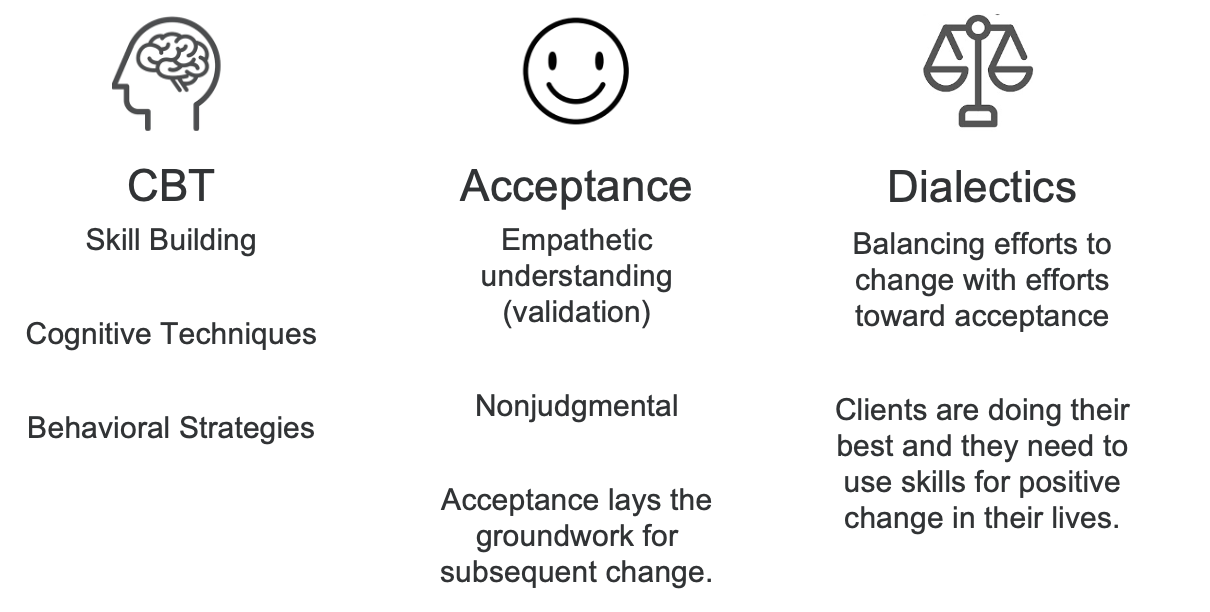
Figure 2. Overview of the components of DBT.
Validation plays a pivotal role in the DBT approach. It affirms that an individual's experiences are valid and acknowledges their efforts amidst their struggles. By validating individuals' challenges and recognizing their best efforts in navigating these difficulties, therapists create a supportive foundation for skill development and positive change.
This emphasis on validation intertwines seamlessly with the dialectical nature of DBT. Within this framework, dialectics illuminate the notion that seemingly opposing views can coexist harmoniously. In DBT, this entails striking a delicate balance between efforts to enact change and the acceptance of one's current circumstances. Therapists operating within the DBT paradigm recognize that clients are doing the best they can at the moment and strive to empower them with the necessary skills to cultivate positive changes in their lives.
Thus, the essence of DBT lies in the integration of cognitive-behavioral techniques for skill-building with the foundational principles of acceptance and validation. By embracing dialectics, therapists navigate the nuanced interplay between change and acceptance, fostering a dynamic therapeutic environment conducive to growth and transformation.
Dialectics
Dialectics are very important in DBT, balancing acceptance with change (Figure 3).
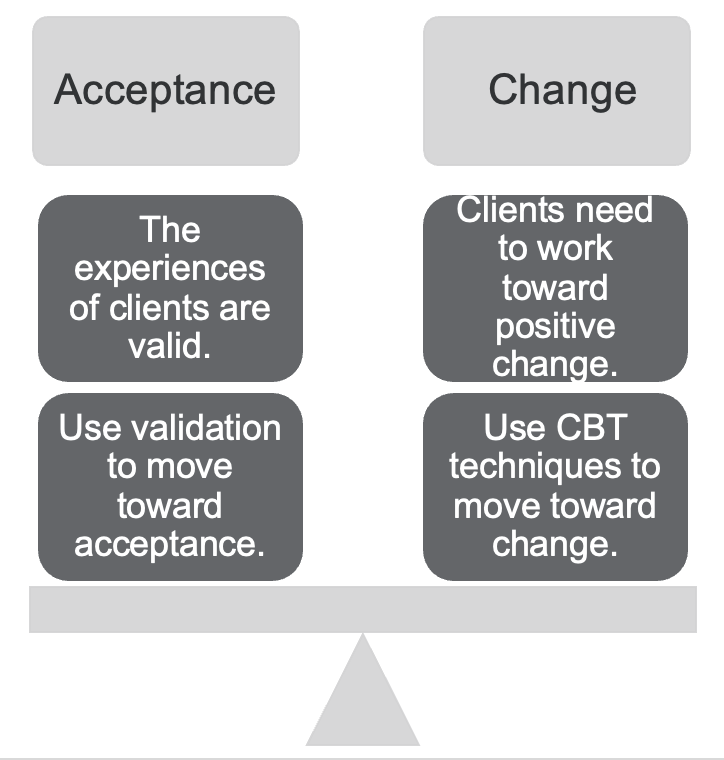
Figure 3. Illustration of the balance between acceptance and change.
In DBT, validation is a powerful tool to guide clients toward accepting their circumstances, acknowledging the genuine pain and struggles they endure. Consider, for instance, an individual grappling with profound depression, withdrawing from the world, and avoiding social interactions. Validating their experience involves empathetically recognizing the validity of their feelings without necessarily endorsing or agreeing with their choices. By validating their reluctance to venture outside in light of their depression, therapists create a space for clients to feel understood and accepted.
However, alongside validation lies the imperative to balance acceptance with the pursuit of change. While clients may be hurting and doing their best in the face of adversity, they must also harness their skills and exert additional effort to instigate positive transformations in their lives. This delicate balance between acceptance and change underscores the essence of DBT, empowering clients to navigate the complexities of their emotional landscape with resilience and determination.
Central to this approach is dialectics, which enhances our cognitive flexibility by encouraging the integration of seemingly contradictory ideas and fostering balanced perspectives. Embracing dialectics entails acknowledging the coexistence of opposing thoughts or emotions and recognizing that both can hold truth simultaneously. For instance, a dialectical perspective might acknowledge feeling overwhelmed by expectations while simultaneously recognizing the capacity to manage stress and prioritize well-being. Through dialectics, individuals cultivate a nuanced understanding of their experiences, paving the way for more adaptive behaviors and balanced decision-making.
Comprehensive DBT
- Comprehensive DBT can last for approx. one year (can vary).
There is full DBT or comprehensive DBT, and a decent amount of research on DBT's effectiveness consists of these different parts of DBT (Figure 4).
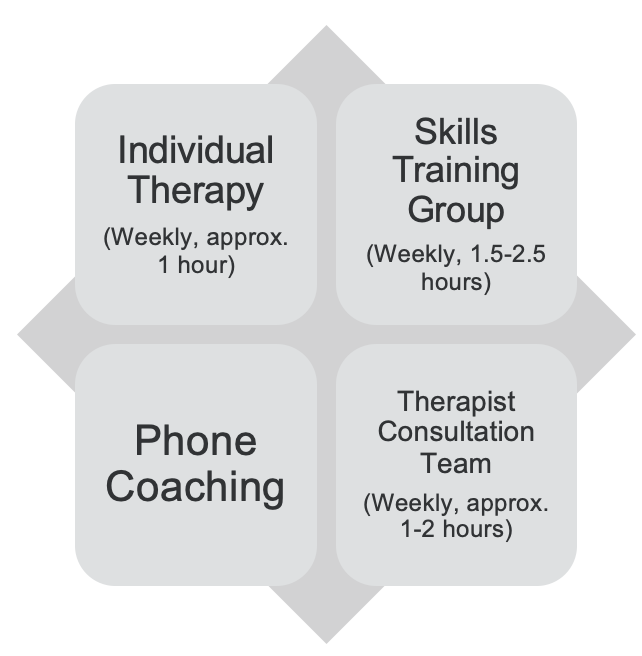
Figure 4. Different parts of DBT (Chapman, 2006).
Comprehensive DBT encompasses various components tailored to provide comprehensive support and guidance to clients navigating the complexities of their emotional well-being. At its core, this approach typically involves weekly individual therapy sessions where clients engage in one-on-one sessions with a trained therapist. These sessions allow clients to delve into their personal challenges, receive targeted interventions, and work collaboratively towards their therapeutic goals.
In addition to individual therapy, clients participate in weekly skills training groups, which are integral to DBT programs. These group sessions typically last around one and a half to two and a half hours, providing a supportive environment for skill-building and peer interaction. Within these groups, clients acquire and refine essential coping skills to better manage their emotions and navigate challenging situations.
Furthermore, clients enrolled in DBT programs benefit from ongoing phone coaching, ensuring immediate access to support whenever needed. Whether seeking guidance on skill application or navigating difficult circumstances, clients can contact a designated therapist or coach for real-time assistance and encouragement.
Recognizing the inherent challenges and potential for burnout in working with individuals with conditions like borderline personality disorder, DBT programs incorporate therapist consultation teams. These teams offer clinicians a forum for professional support, supervision, and guidance. By fostering a culture of collaboration and non-judgmental clinical decision-making, these consultation teams prioritize the well-being of clients and therapists, mitigating the risk of burnout and enhancing the quality of care delivered.
Through the integration of these components, comprehensive DBT programs provide a holistic framework for healing and growth, empowering clients to navigate life's challenges with resilience and self-efficacy.
DBT Treatment Hierarchy
Figure 5 shows the treatment hierarchy.
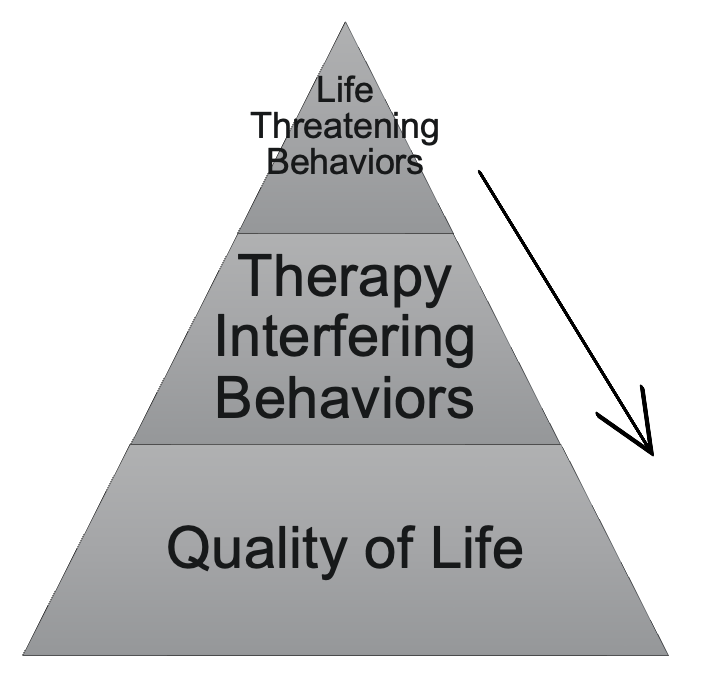
Figure 5. Treatment hierarchy (Rathus & Miller, 2015).
In DBT, treatment prioritization is guided by a hierarchical model that places paramount importance on addressing life-threatening behaviors first. Any behaviors posing an immediate threat to the client's well-being, such as suicidal ideation or self-harm, are swiftly addressed and managed as the highest priority.
Following life-threatening behaviors, attention turns to therapy-interfering behaviors. These behaviors encompass actions or attitudes that disrupt or impede the therapeutic process, such as tardiness, incomplete homework assignments, or disruptive behavior during group sessions. Therapists ensure a conducive environment for effective treatment delivery and progress by addressing and resolving these issues.
Finally, quality-of-life behaviors come into focus. While not immediately life-threatening, these behaviors and concerns significantly impact the client's well-being and daily functioning. Examples include difficulties in friendships, academic performance, or other aspects of daily life. While these concerns are valid and important, they are addressed in due course once the more urgent issues have been addressed.
This hierarchical approach underscores the structured and systematic nature of DBT, ensuring that treatment efforts are directed toward the most pressing concerns before progressing to less critical issues. By adhering to this hierarchy, therapists optimize treatment efficacy and prioritize the safety and well-being of their clients.
Is DBT Effective?
DBT has been pretty widely researched. A lot of the research that is on my next few slides is primarily focused on DBT with adolescents, but it is effective in addressing suicidal and self-harm behaviors with adults.
DBT |
|
It is efficacious in addressing a wide range of difficulties with emotion regulation in adolescents (MacPherson et al., 2012). | |
DBT Skills Training | It may be sufficient for addressing emotion dysregulation in clients without BPD (Delaquis et al., 2022). |
It may be a transdiagnostic intervention for emotion dysregulation. | |
It is effective in treating common mental health conditions, such as depression, Binge Eating Disorder (BED)/bulimia, and co-morbid anxiety (Delaquis et al., 2022). |
DBT With Adolescents
- DBT and its various adaptations have been used to address the following:
- Suicidal and Self-harm behaviors (Kothgassner et al., 2021)
- BPD symptoms (Hiller & Hughes, 2022)
- Emotion dysregulation
- Depression (Delaquis, 2022)
- Anxiety (Naziir et al., 2023)
- PTSD symptoms (Bohus et al., 2013 )
- Externalizing problems such as defiance and aggression (Jacubovic & Drabick, 2023)
- Anger reduction (Haktaniri et al., 2023)
- Impulsivity (Hiller & Hughes, 2022)
- Bipolar Disorder – Depression, Mania, Hypomania, and Suicidal Behaviors (Goldstein et al., 2023)
- Substance use (Haktanir & Callender, 2020; Marceau et al., 2021)
- Psychological resilience (Karbasdehi et al., 2021)
- Eating disorders
- Such as BED/bulimia, ED across diagnoses as well as levels of care (Delaquis et al., 2022; Vogel et al., 2021)
- Executive functioning
- In adolescents with emotion dysregulation (Vijayapriya & Rameshbabu, 2023; Smith et al., 2019)
- ADHD symptoms and executive functioning
- Among adolescents with ADHD (Fleming et al., 2015)
- Emotion dysregulation in individuals with Autism Spectrum Conditions (Phillips et al., 2024)
- Improvements in coping, depression, emotion regulation, and borderline symptoms with sexual minorities (Poon et al., 2022)
- Effective for individuals across socioeconomic categories and community-based settings (Hiller et al., 2022)
DBT, particularly its skills training component, has demonstrated remarkable efficacy in addressing a wide spectrum of adolescent emotion regulation challenges. While comprehensive DBT has garnered extensive research attention, emerging evidence indicates that DBT skills training alone may serve as a valuable transdiagnostic intervention for emotion dysregulation across various mental health conditions. This suggests that DBT skills training holds promise as a versatile and effective tool for improving emotional well-being in diverse populations.
Research indicates that DBT, in its various adaptations, has proven beneficial in addressing many issues commonly encountered by adolescents. From managing suicidal ideation and self-harm behaviors to tackling anxiety, depression, defiance, aggression, impulsivity, and substance use, DBT has demonstrated its versatility and efficacy. Moreover, it has shown promise in enhancing psychological resilience in eating disorders, improving executive functioning in individuals with emotion dysregulation and ADHD symptoms, and addressing emotion dysregulation in autism spectrum conditions.
DBT's effectiveness transcends demographic boundaries, making it a suitable option for adolescents across socioeconomic and sexual preference categories. Its tailored approach to addressing emotion dysregulation, suicidal ideation, self-harm, chronic stress, interpersonal challenges, and impulse control difficulties underscores its applicability and relevance in addressing a wide range of clinical presentations among adolescents.
In essence, DBT, with its emphasis on skill-building and adaptive coping strategies, offers a holistic and evidence-based approach to supporting adolescents in navigating the complexities of their emotional lives and fostering resilience in the face of adversity.
Overview of Comprehensive DBT
It might not be best for someone looking for a quick treatment because this treatment takes time. Comprehensive DBT can take about a year (Figure 6).

Figure 6. Overview of comprehensive DBT.
When considering the full DBT approach, it's crucial to emphasize the need for commitment and a genuine willingness to engage with the skills and techniques offered. This treatment may not be as beneficial for conditions not primarily involving emotion dysregulation or interpersonal difficulties.
It's worth noting that while comprehensive DBT primarily targets emotion dysregulation, there are specialized adaptations for other clinical presentations. For instance, Radically Open DBT is tailored for individuals struggling with disorders of overcontrol. Additionally, there are adaptations of DBT designed for individuals with cognitive or intellectual differences. While I haven't delved into the specifics of these adaptations, it's important to exercise discretion and consider each case individually. I have personally utilized DBT with individuals who have mild cognitive impairments, making necessary modifications as needed. However, the suitability of DBT for individuals with intellectual disabilities should be assessed on a case-by-case basis, taking into account factors such as cognitive abilities, engagement in therapy, and the appropriateness of DBT skills and techniques for the individual's needs.
DBT Settings
- DBT may be used in the following settings:
- Hospital-based psychiatric settings
- Residential treatment
- Juvenile justice programs
- Outpatient clinics
- Community-based settings
- Schools
- Others
DBT's versatility allows its implementation across diverse settings, each catering to specific populations and clinical needs. My personal experience with DBT spans various contexts, beginning with community-based mental health settings where I worked closely with youth. This initial exposure ignited my passion for DBT and propelled me towards hospital-based roles within intensive outpatient programs and partial hospitalization programs, both of which were deeply rooted in DBT principles.
In these settings, I facilitated supplemental groups alongside the standard DBT skills training sessions, tailoring interventions to meet the unique needs of the individuals under our care. Beyond hospital-based programs, DBT has found application in a multitude of environments, including residential treatment facilities, juvenile justice programs, outpatient clinics, community-based settings, and schools. Its adaptability extends even to correctional facilities, where it has been utilized to address issues such as anger management among incarcerated individuals.
Within the realm of adolescent mental health, DBT offers a structured framework through its specialized skills modules. These modules are meticulously designed to equip adolescents with the tools and strategies to manage emotions, navigate interpersonal relationships, and foster overall well-being. Through its widespread implementation and efficacy across diverse settings, DBT continues to make significant contributions to the field of mental health, offering hope and support to individuals facing a myriad of challenges.
DBT for Adolescents (DBT-A) Skills Modules
- Core Mindfulness
- Distress Tolerance
- Emotion Regulation
- Interpersonal Effectiveness
- Walking the Middle Path*
(Rathus & Miller, 2015)
DBT adapted for adolescents is different. One of the differences is that it has an extra module. We'll be talking a little bit more in-depth about each of these. The first is core mindfulness, which is essential for all the other skills modules. Then we have distress tolerance, emotion regulation, interpersonal effectiveness, and walking the middle path. Walking the middle path is unique to DBT with youth focusing on families.
Skill Module: Core Mindfulness
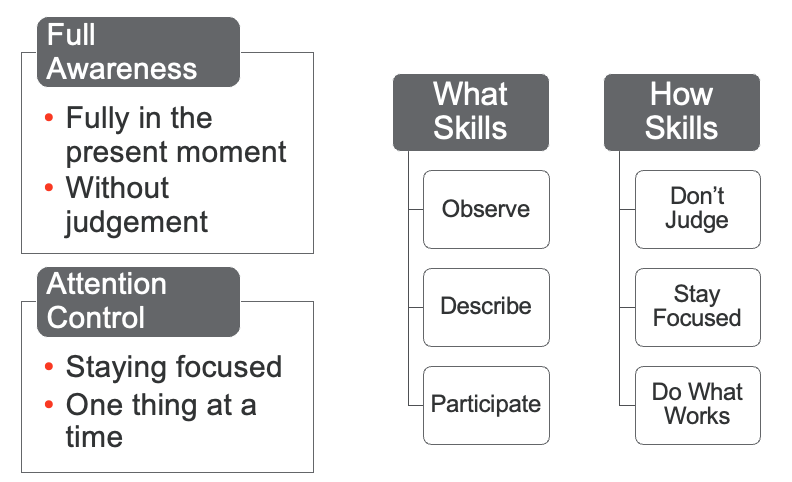
Figure 7. Skills for core mindfulness (Rathus & Miller, 2015).
Core mindfulness, a foundational aspect of DBT, involves cultivating full awareness and being fully present in the moment without judgment, coupled with attention control. This entails staying focused on the present moment and maintaining attention on one thing at a time. Within the mindfulness framework, there are "what" and "how" skills.
The "what" skills encompass observing, describing, and participating. Observing involves simply noticing and being aware of what is happening in one's environment or internally. Describing entails mindfully and non-judgmentally articulating one's observations in detail, almost as if seeing them for the first time. Participation involves fully immersing oneself in the present moment and actively engaging with one's surroundings. For instance, a participatory exercise like group juggling emphasizes the importance of being fully present and attentive in the moment.
On the other hand, the "how" skills focus on the practical application of the "what" skills. This involves adopting a non-judgmental stance towards one's experiences, noticing any judgments that arise, and allowing them to pass without attachment. It also involves maintaining focus on the present moment, avoiding distractions, and practicing mindfully, which means dedicating full attention to one task or experience at a time. Additionally, employing effectiveness, or doing what works, entails adapting to situations without becoming ensnared in expectations or rigid beliefs about how things should be.
These mindfulness skills serve as a cornerstone of DBT, laying the groundwork for acquiring and applying other DBT skills. By regularly incorporating mindfulness practices throughout the DBT process, individuals learn to cultivate a greater sense of awareness, presence, and nonjudgmental acceptance, ultimately facilitating emotional regulation and improving overall well-being.
Tips For Doing Mindfulness With Adolescents
Here are some tips for mindfulness in Figure 8.
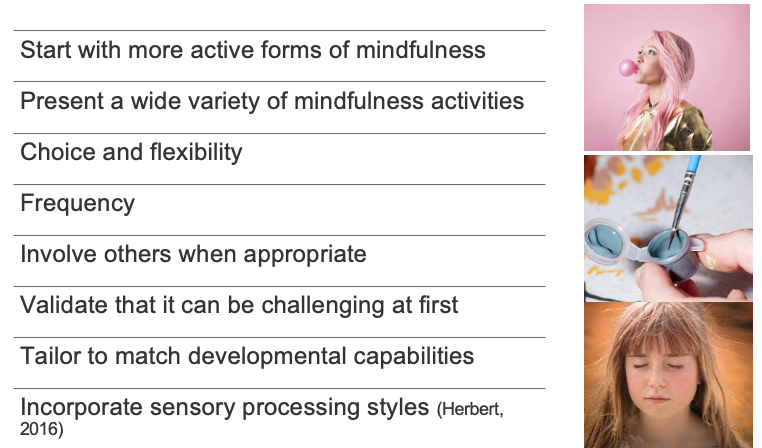
Figure 8. Tips for mindfulness with adolescents.
Commencing with more active forms of mindfulness can be advantageous, particularly with adolescent clients who may find engagement easier when activities resemble games or entail movement. I've found group activities particularly effective, like the aforementioned group juggling. Not only do they offer an interactive and engaging platform for practicing mindfulness, but they also foster teamwork and cooperation among participants.
When introducing mindfulness activities, I prioritize offering diverse options and empowering clients to select activities that resonate with them. This approach fosters a sense of ownership and increases motivation and engagement in the practice. Additionally, involving others, such as family members or peers, can enhance the effectiveness of mindfulness practices and create a supportive environment conducive to growth and learning.
Validating the challenges that clients may encounter during mindfulness practice is crucial. It's important to reassure them that feelings of uncertainty or perceived inadequacy are common and part of the learning process. By emphasizing that mindfulness is a skill that develops over time and encouraging self-compassion, we can help alleviate feelings of frustration and promote a positive attitude towards practice.
As an occupational therapist, I leverage my understanding of clients' developmental abilities to tailor mindfulness practices accordingly. This may involve adapting activities to suit different age groups or considering individual needs and preferences. By integrating mindfulness into our therapeutic interventions in a thoughtful and client-centered manner, we can assist clients in cultivating greater self-awareness, resilience, and overall well-being.
Wise Mind
One goal of mindfulness is to access something called a wise mind (Figure 9).
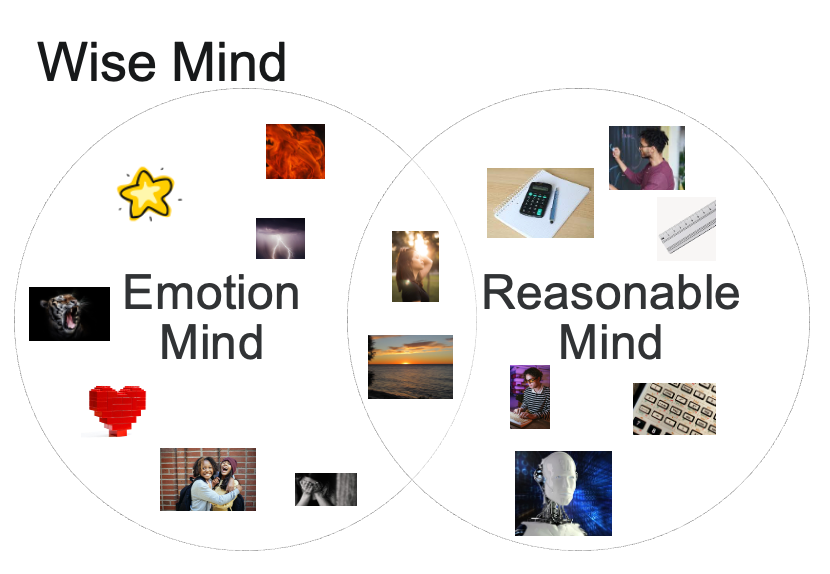
Figure 9. Venn diagram showing a wise mind.
In DBT, there are three distinct mind states: emotional mind, reasonable mind (or rational mind), and wise mind. Emotion mind refers to a state where individuals are primarily driven by their emotions, leading their judgments and decision-making to be heavily influenced by their emotional state. While this can be beneficial in certain situations, such as appreciating beauty or experiencing love, relying solely on emotion can be detrimental when making important decisions.
On the other hand, a reasonable mind or rational mind involves approaching situations purely from a logical standpoint, devoid of emotional input. While this mindset may be useful for tasks like problem-solving or mathematical calculations, it falls short when considering interpersonal relationships or the complexities of human emotions.
The wise mind, situated at the intersection of the emotional and reasonable minds, represents a balanced and integrated approach that incorporates both emotional and logical reasoning. It's where individuals can harness the wisdom of their emotions while also considering rational perspectives. However, grasping the concept of a wise mind, especially for adolescents, can sometimes be abstract.
To help adolescents understand these mind states, I often encourage them to visualize characters or images that represent each state. For instance, we might discuss how the Hulk embodies an emotional mind, reacting impulsively to anger. Conversely, a character like Spock from Star Trek could exemplify a reasonable mind, relying solely on logic and reasoning.
Furthermore, I find it helpful to explore what a wise mind looks and feels like through detailed discussions or creative activities like collages or drawings. By identifying specific characteristics associated with a wise mind, such as feeling calm, balanced, or centered, adolescents can better recognize when they are operating from a place of wisdom in their lives. This nuanced understanding helps them navigate their emotions and decision-making more effectively, ultimately promoting greater self-awareness and emotional regulation.
Wise Mind With Adolescents
These images can be really helpful in working with adolescents because when we access wise minds, we're more able to use many of the skills we're learning in DBT.
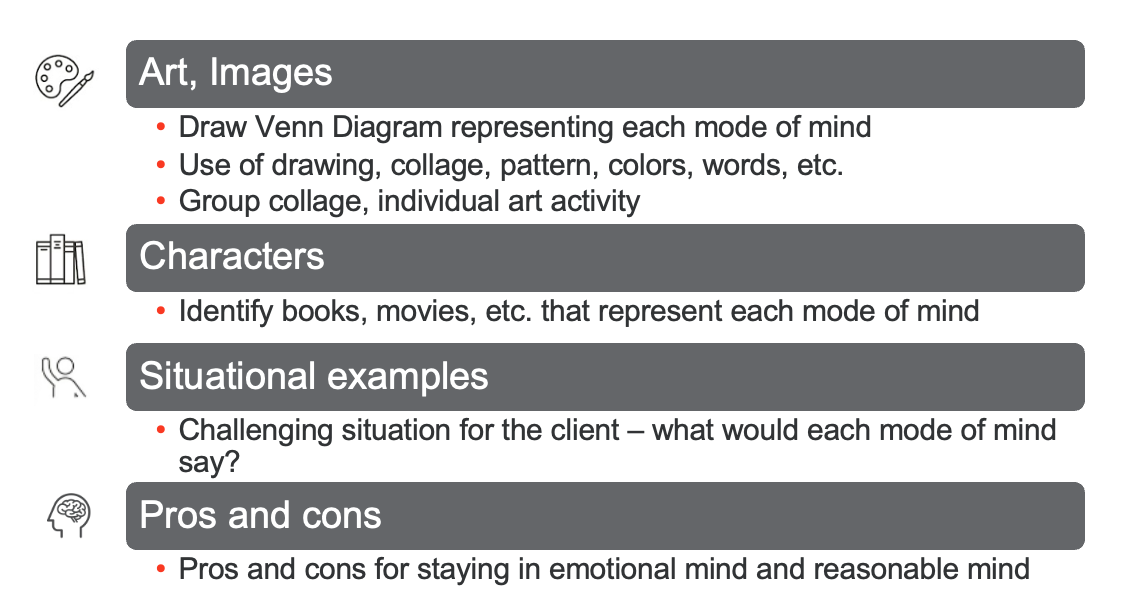
Figure 10. Wise mind characteristics.
I've found various strategies effective in facilitating understanding and engagement when teaching adolescents about wise minds. Visual aids like Venn diagrams, images, and collages can provide tangible representations of the three mind states, making the concept more concrete and relatable. Adolescents can draw parallels and deepen their comprehension by identifying characters from movies or books that embody each mind state.
Situational examples are another valuable tool for illustrating the differences between an emotional, reasonable, and wise mind. By discussing challenging scenarios and considering how each mind state would respond, adolescents can gain insight into the benefits and limitations of each approach. For instance, exploring characters from popular media, such as those from the Harry Potter series, can spark enthusiasm and facilitate discussions about which character aligns with each mind state in various situations.
Additionally, exploring the pros and cons of remaining in an emotional or reasonable mind versus transitioning to a wise mind can encourage critical thinking and self-reflection. By highlighting the potential advantages of operating from a place of wisdom, adolescents are motivated to cultivate this balanced mindset. By employing these interactive and relatable teaching methods, adolescents can develop a deeper understanding of the wise mind and its significance in navigating life's challenges with resilience and insight.
Skill Module: Distress Tolerance
- Crisis Survival Skills
- TIPP Skills
- Wise Mind ACCEPTS (Distraction)
- Self-Soothe w/Senses
- IMPROVE the Moment
- Pros and Cons
- Reality Acceptance Skills
- Turn the Mind
- Radical Acceptance
- Willingness
Here are some characteristics of distress tolerance. TIPP, an acronym within DBT, encompasses four key steps: temperature, intense exercise, paced breathing, and progressive muscle relaxation.
Skill Module: Emotional Regulation
This is the emotion regulation module (Figure 11).
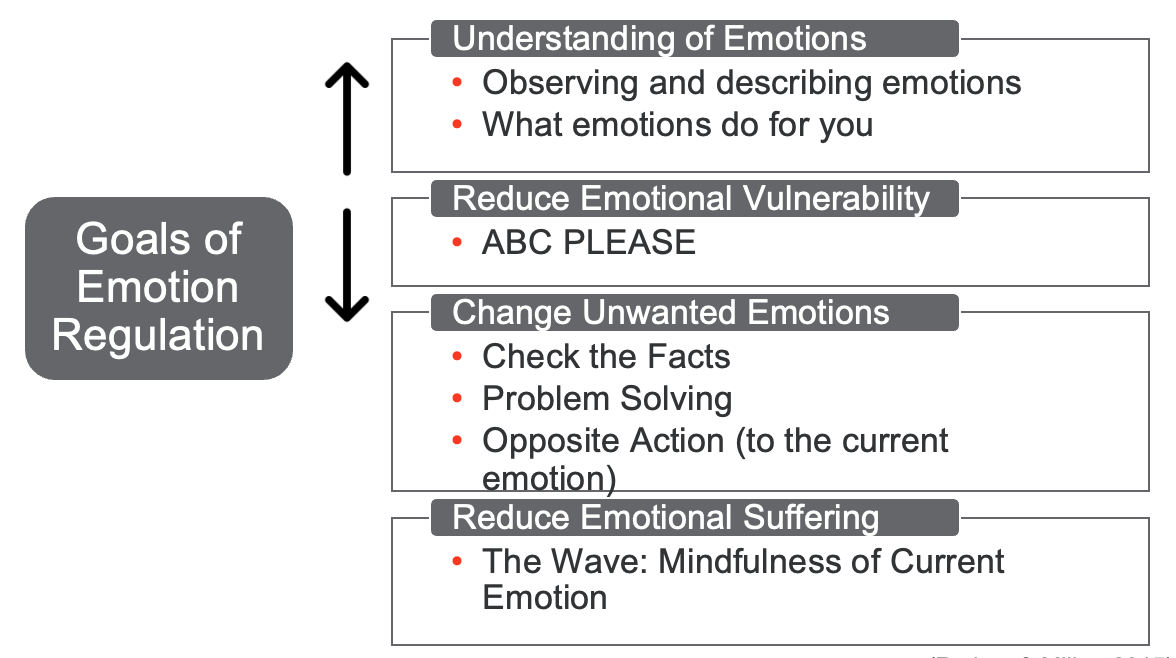
Figure 11. Goals of emotional regulation (Rathus & Miller, 2015).
In the emotion regulation module, our primary objectives revolve around understanding our emotions and developing effective strategies for managing them. We start by honing our ability to observe and describe our emotions, recognizing that each emotion serves a purpose in our lives.
To reduce emotional vulnerability, we employ various techniques, including the ABC PLEASE skill. This approach helps decrease susceptibility to intense emotions over time by encouraging actions such as checking the facts, problem-solving, or acting opposite to our current emotional state when it doesn't align with reality. For example, if we're feeling angry in a situation where anger isn't justified, we might respond calmly rather than aggressively.
Additionally, we work on minimizing emotional suffering by practicing mindfulness, akin to riding the wave of our emotions, experiencing them fully as they come and go.
Skill Module: Interpersonal Effectiveness
Regarding interpersonal effectiveness, we focus on nurturing healthy relationships and addressing emotional sensitivity and invalidation (Figure 12).

Figure 12. Goals for interpersonal effectiveness (Rathus & Miller, 2015).
By providing clients with the tools to navigate diverse situations and cultivate validating connections, we empower them to forge more positive and enriching relationships. Essential skills like DEAR MAN (Describe the situation, express how you feel about the situation, assert yourself, facilitate assertive communication to achieve personal goals, reinforce your request, mindfulness is vital, appear confident, and negotiate), FAST (Fair, Apologies, Stick to Values, and Truthful), and prioritizing self-respect are tailored to specific contexts. They enable individuals to pursue their objectives while maintaining their values and boundaries.
Our ultimate goal is to achieve equilibrium between acceptance and change, mindfulness and action – embracing the middle path. Through the cultivation of these skills and principles, individuals can enhance their emotional well-being, effectively navigate life's challenges, and foster resilience and authenticity in their journey.
Skill Module: Walking the Middle Path
- This module is unique to DBT for youth and aims to help families collaboratively find the middle path and focuses on dialectics, validation and behavior change.
Walking the middle path again is a module for adolescents and their families, and it is unique to DBT for youth. Figure 13 shows an overview of this.
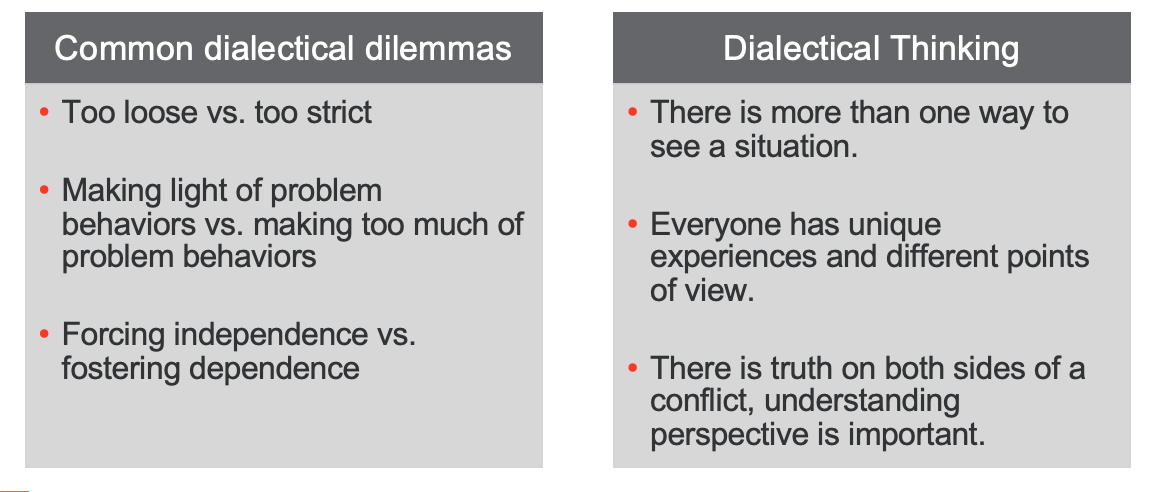
Figure 13. Walking the Middle Path overview (Rathus & Miller, 2015).
The family component of DBT aims to facilitate collaborative efforts in finding a middle ground, emphasizing dialectics, validation, and behavior change. The overarching goal is to cultivate a more supportive environment for the client while reducing conflict within the family dynamics.
In working with youth, common dialectical dilemmas within families often revolve around issues such as overly lenient versus overly strict parenting styles or oscillating between downplaying problem behaviors and overly focusing on them. Similarly, there may be a struggle between promoting independence and fostering dependence in children. The focus lies in finding a balanced approach within these dilemmas, advocating for the middle path through dialectical thinking and action.
Central to this approach is the recognition that there are multiple perspectives to any situation, and everyone's experiences and viewpoints are valid. By embracing dialectical thinking, families can navigate conflicts more effectively, acknowledging the truths inherent in each side of the disagreement. This understanding fosters harmony and cooperation within the family unit.
- Validation – an acknowledgment that the thoughts, behaviors, and feelings of others are valid, even if they do not align with one’s perspective.
Validation does not equal agreement.
“Your perspective on the matter is valid; it’s understandable why you’d feel that way given your experiences.”
- Behavior Change – Strategies to increase desired behaviors and decrease undesired behaviors in ourselves and others.
(Rathus & Miller, 2015)
Validation is a powerful tool in conflict reduction, soothing individuals experiencing emotional dysregulation. It involves acknowledging the validity of thoughts, behaviors, and feelings, whether they align with our own perspective or not. Validation does not equate to agreement but rather signifies understanding the individual's experiences and emotions.
There are various approaches to validation, each with different levels and techniques. However, the fundamental aspect lies in communicating to the individual that their feelings are recognized and understood without judgment. This validation fosters a sense of calmness and openness, making individuals more receptive to communication and support.
In addition to validation, behavior change constitutes another essential aspect of walking the middle path. These strategies aim to either increase desired behaviors or decrease undesired ones in individuals and family dynamics. Techniques such as positive reinforcement and negative reinforcement are employed to address behavioral challenges collaboratively. While parents may often take the lead in implementing behavior change strategies, involving the adolescent in the process is crucial for fostering ownership and commitment to change.
DBT Skills With Adolescents
- Storytelling- provide examples youth for how a skill might be used; personal examples are OK, just maintain professional focus
- Use scenarios from popular books, movies and characters, etc. to facilitate engagement
- Model use of the skill
- Have youth teach skill
- Role-play with in-session feedback
- Provide opportunities to practice skill for increased likelihood of effective use of skill during difficult time
- Expressive arts and recreational activities can be used to facilitate skill acquisition
- Help youth with remembering skills and remembering to use skills – visual prompts
- May want to divide skills into smaller chunks
- Make modifications/additional adaptations when needed
- Share with family
- Dialectical belief of clients; use of validation and behavior strategies
When teaching DBT skills to adolescents, incorporating storytelling can greatly enhance engagement and comprehension. Sharing personal examples while maintaining a professional focus provides real-life context for why and how specific skills are beneficial. It's essential to consider the relevance of each story to the client's learning objectives and how it may support their skill acquisition.
Utilizing scenarios from popular media, such as books or movies, can further stimulate engagement and encourage adolescents to relate the skills to their own experiences. Modeling skill usage within these scenarios helps clarify their practical application. Additionally, involving adolescents in teaching skills, engaging in role-play exercises, and providing constructive feedback fosters skill mastery within the therapeutic setting.
Integrating expressive arts and recreational activities offers alternative avenues for skill acquisition, promoting creativity and active participation. Visual prompts, created by the therapist or the client, serve as valuable reminders and aid in habit formation, particularly for complex acronyms like DEAR MAN or IMPROVE.
Ultimately, the goal is to transform these skills into ingrained habits, enabling adolescents to apply them effectively in their daily lives beyond therapy sessions.
- Imagery
- Meaning
- Prayer
- Relaxation
- One thing in the moment
- Vacation
- Encouragement
It's important not to rush through teaching DBT skills during sessions. Understanding and internalizing these skills take time, and it's crucial to ensure that adolescents grasp the concepts before moving forward. Don't hesitate to spend additional time on a skill if needed, as comprehension and application are key to skill acquisition.
Encouraging adolescents to share what they've learned with their families or peers can further reinforce their understanding and application of DBT skills. This collaborative approach enhances their skill development and creates a supportive network where everyone can benefit from these strategies.
Maintaining a dialectical belief in clients is fundamental in DBT practice. This involves balancing validation and acceptance with encouragement and support for change. By acknowledging and validating clients' experiences while guiding them toward positive change, therapists can foster growth and resilience in adolescents undergoing DBT therapy.
The Fit Between OT and DBT
Integrating DBT skills into clinical practice transcends specific disciplines and can benefit all clinicians working with clients who could benefit from these strategies. While the tips provided are applicable to all practitioners using DBT, the alignment between OT and DBT is particularly noteworthy.
For OT professionals who may not have extensive exposure to DBT, simply exploring DBT skills and materials can reveal striking similarities and shared goals. Even a cursory review of DBT slides or handouts can highlight how these approaches complement each other, fostering a deeper understanding of their common ground.
I've personally witnessed how OT principles, such as environmental modifications for sensory preferences and active engagement in skill-building activities, seamlessly integrate with DBT practices. This integration enhances the effectiveness of therapy sessions and underscores the holistic nature of client-centered care.
Educating fellow clinicians about the potential synergy between OT and DBT can further advocate for occupational therapy's unique contributions within interdisciplinary treatment teams. Recognizing and embracing these parallels can enrich our practice and better support our clients' diverse needs.
Shared Attributes
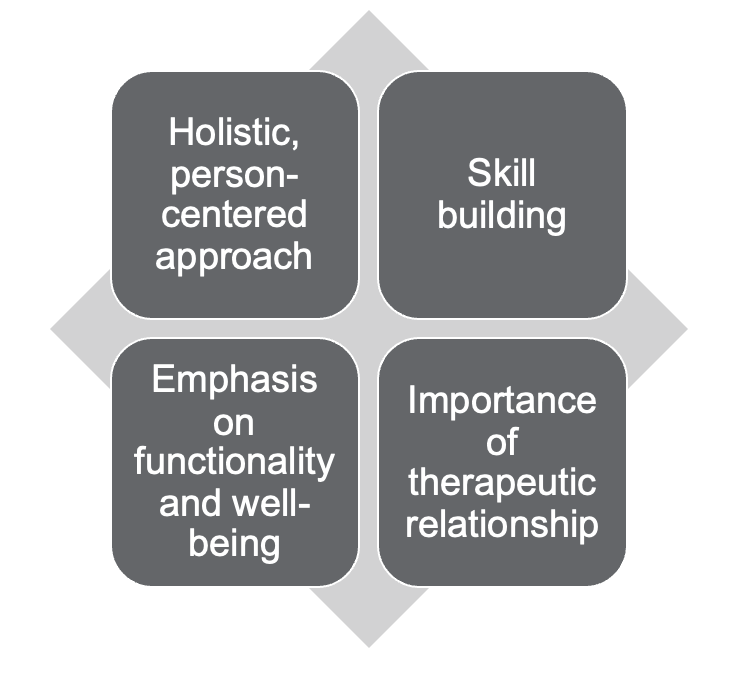
Figure 14. Shared attributes between OT and DBT.
Both are holistic and person-centered. They also care about the client's values and goals. They focus on skill acquisition and generalization. Their DBT clinicians will also ask about how the environment can be set up to support someone's skill use and emotion regulation.
It's focused on skill building, functionality, and well-being, with some of those skills reducing emotional vulnerability. Both place importance on the therapeutic relationship.
OT and DBT
- Why might an OT practitioner consider incorporating DBT skills with clients?
- Organization and structure
- Principles and philosophies align well with OT
- Evidence-based
- Skills for navigating life's daily challenges and building resilience
- Widely used
- Care coordination and shared language with providers
- Benefits of DBT consultation team, if involved
Several factors can influence the decision to integrate DBT into occupational therapy practice, each contributing to the comprehensive and effective delivery of care.
Firstly, the robust evidence base supporting DBT underscores its efficacy in addressing emotion dysregulation and promoting overall well-being. This evidence-based approach provides a solid foundation for interventions, instilling confidence in clinicians and ensuring that clients receive interventions backed by research and clinical expertise.
DBT's structured and organized nature may also appeal to occupational therapists, offering a clear intervention planning and implementation framework. Its systematic approach, with its comprehensive set of skills and acronyms, provides clinicians with a versatile toolkit for addressing a wide range of client needs and challenges.
Moreover, the life skills embedded within DBT extend beyond emotion regulation, encompassing essential skills for navigating daily life and fostering resilience. Given the occupational therapy focus on activities of daily living, the alignment between DBT skills and occupational therapy goals is evident, making DBT a natural fit within an occupational therapy context.
Additionally, the widespread recognition of DBT among mental health providers facilitates interdisciplinary collaboration and coordination of care. By adopting DBT principles and language, occupational therapists can enhance communication with other treatment team members, promoting a shared understanding and approach to client care.
Lastly, DBT consultation teams offer invaluable support to clinicians, helping mitigate the challenges associated with mental health work and promoting clinician well-being. The collaborative nature of DBT consultation teams fosters a culture of learning, reflection, and support, ultimately enhancing the quality of care delivered to clients.
- In what ways can OT complement DBT?
- Meaningful and functional application of skills
- Skill development through meaningful activities
- Activity adaptation and grading
- Incorporating skills into habits, routines
- Environmental modification skills
- Sensory assessment and processing knowledge
- Enhanced engagement and motivation
OTs have a lot to bring to DBT. In fact, DBT's focus is on functionality, and its logo is DBT making a life worth living. Our areas of expertise are functional skill application, meaningful skill development, activity adaptation and grading, helping people incorporate skills into habits and routines, environmental modifications, sensory assessment and processing, enhanced engagement, and motivation. I think OT can help make DBT even more functional and meaningful to clients.
Incorporating DBT Skills Into OT Interventions
Models, Theories, Frameworks, Approaches
- Person-Environment-Occupation-Performance (PEOP) model (Baum et al., 2015)
- Model of Human Occupation ([MOHO], Kielhofner, 2008)
- Canadian Model of Occupational Performance and Engagement ([CMOP-E], (Polatajko et al., 2007)
- Dunn’s Model of Sensory Processing (Dunn, 1997)
- Sensory Integration
- Trauma-Informed Care
These are for your reference. We can use a DBT approach, but we can also use other models. We want to stay OT-focused even though we might be using DBT.
DBT Skills and Occupation
- Occupation and therapeutic activities:
- To promote the acquisition of DBT skills
- To facilitate the integration of the DBT skills
- As a method of DBT skill implementation
- To enhance motivation and engagement
- DBT skills:
- To support occupational performance and participation
We can use occupational and therapeutic activities to promote the acquisition of DBT skills, facilitate their integration, and enhance motivation and engagement. Then, we can use DBT skills to support occupational performance and participation.
Occupation and Therapeutic Activities to Promote the Acquisition of DBT skills
- Mindfulness activities
- Contour Drawing (Observe, One-Mindfully)
- Reverse Pictionary (Describe)
- Expressive art activities
- Wise Mind Venn Diagram (Wise Mind)
- Representation of Kintsugi (Dialectics)
Using occupation and therapeutic activities can be incredibly effective in helping individuals grasp and internalize DBT skills. By incorporating engaging and meaningful activities, we can better understand these skills and promote their integration into daily life.
For instance, consider the concept of mindfulness. To illustrate the idea of being fully present in the moment, we might introduce activities like contour drawing or reverse Pictionary. In contour drawing, individuals focus on drawing an object without lifting their pen from the paper, encouraging them to observe details and stay present. Similarly, in reverse Pictionary, participants describe a drawing to someone else using mindful observations, emphasizing the skill of observation and description.
Expressive arts activities can also be valuable tools for exploring DBT concepts. For example, creating artwork inspired by the Japanese practice of Kintsugi, where broken pottery is repaired with gold or silver lacquer, can highlight the idea of finding beauty in imperfection and embracing contradictions. Through such activities, individuals not only gain a conceptual understanding of DBT skills but also have the opportunity to practice and develop these skills in a creative and experiential manner.
Therapeutic occupations and activities serve as powerful vehicles for skill development, enabling individuals to comprehend the principles of DBT and apply them in practical contexts. By harnessing the inherent therapeutic potential of meaningful activities, we can support individuals in their journey towards enhanced emotional regulation and well-being.
- Games and recreation
- Modified games to promote specific skills
- Card negotiation game (DEAR MAN)
- Writing
- Writing a validating letter to self about challenging time to develop Self-Validation skill
- Client-chosen activity or occupation
- The client noticed feeling distracted from distressing thoughts and feelings following engagement in a word search (Wise Mind ACCEPTS)
Integrating DBT skills into games and activities can significantly enhance skill development and practical application. Games that involve negotiation or strategic thinking are inherently suited for practicing skills such as DEAR MAN, a communication skill in DBT. By adapting these games to include elements of DEAR MAN, individuals can learn to assertively express their needs and navigate interpersonal interactions more effectively.
Therapeutic activities, such as writing letters to oneself about challenging situations, offer a powerful means of developing self-validation skills. Through the process of articulating thoughts and feelings on paper, individuals can gain clarity and perspective, strengthening their ability to validate their own experiences.
Client-driven activities, like engaging in a word search to distract from distressing thoughts and feelings, provide valuable opportunities for self-discovery and skill application. Individuals can develop strategies to manage their emotions more effectively and proactively by identifying activities that positively impact their emotional well-being.
- Art
- Art cards as visual reminders to use skills; discussion of when to use skill and how to use visual reminders to support the use of skill
- Collage as a visual reminder of Values, Goals, Pleasant Activities, ABC PLEASE; supplement with goal-setting, activity scheduling, etc.
Using art as a tool to reinforce DBT skills can be highly effective, especially for adolescents. Art cards that depict key DBT concepts or skills can serve as helpful reminders and prompts for practicing mindfulness or distress tolerance techniques.
Engaging in art-focused activities such as collages or drawings centered around DBT themes like values, goals, or pleasant activities can help adolescents explore and internalize these concepts in a creative and expressive manner. Additionally, supplementing these activities with further goal setting and activity scheduling can enhance their effectiveness in promoting skill acquisition and application in daily life.
- Skill kit creation
- Creation of sensory kit for Self-Soothe w/Senses skill following identification of sensory preferences
- Distraction kit for WISE MIND ACCEPTS
- Sleep-kit for Sleep portion of PLEASE skill
OTs are really good at skill creation, and DBT really lends itself to that. Self-soothing, distraction, distress tolerance, sleep kits, and things like that.
- Group activities with emphasis on specific skill
- Modified games and/or social, recreational, and art activities with emphasis on a specific skill
Group activities that emphasize specific DBT skills can be incredibly beneficial for adolescents. Activities like reverse charades, which emphasize active participation, can help reinforce the "participate" skill while fostering teamwork and communication.
Moreover, involving families in these activities can further enhance their effectiveness. Families can strengthen their bonds, promote positive emotions, and create a supportive environment for practicing DBT skills by engaging in meaningful and enjoyable activities together. Family involvement encourages skill generalization and fosters a sense of connection and collaboration among family members.
- Family activities with emphasis on specific skills
- Reverse Charades with emphasis on Mindfulness Participate and Don’t Judge Skills, or ABC (Accumulate Positive Emotions)
So it can be really helpful with families, sometimes doing it with the family in like a multifamily group or assigning it as homework
- Incorporating occupations that facilitate skill use into daily routines
- OT practitioner and client work on incorporating yoga into the morning routine as a way to practice daily Mindfulness
- OT practitioner and client work on a plan to rollerblade after school to Exercise and Accumulate Positive Emotions through engaging in pleasant activities (ABC PLEASE)
Incorporating meaningful occupations into daily routines is a cornerstone of occupational therapy practice. By integrating activities such as yoga into morning routines, clients can effectively practice mindfulness and start their day with a sense of calm and focus. Similarly, collaborating with clients to plan activities like rollerblading after school promotes physical exercise and allows them to accumulate positive experiences and engage in enjoyable pastimes.
As occupational therapy practitioners, we excel in identifying and harnessing the power of meaningful activities to enhance motivation, promote well-being, and support clients in achieving their goals. Integrating such activities into interventions can facilitate skill development and foster holistic growth in our clients.
Occupation and Therapeutic Activities as a Method of DBT Skill Implementation
Occupational therapy practice offers numerous opportunities to support clients across various contexts using DBT skills. For instance, developing a distress tolerance kit can be a valuable strategy to assist clients in managing overwhelming emotions during school participation. Additionally, coaching clients using the DEAR MAN skill can be instrumental in preparing them for a successful job interview.
Moreover, employing the opposite action skill can empower clients to confront their fears and engage in activities they might otherwise avoid, such as trying out for a sports team like volleyball. Furthermore, teaching validation skills to clients and their families can foster improved communication and interaction dynamics, particularly during activities like family mealtime.
By leveraging these approaches, occupational therapists can enhance the effectiveness of DBT interventions and contribute to clients' overall well-being and occupational engagement.
- Example
- The OT practitioner supports the client in identifying, planning for, and engaging in an occupation that Accumulates Positive Experiences in alignment with the client’s value of having fun.
- Playing volleyball
- The OT practitioner supports the client in identifying, planning for, and engaging in an occupation that Accumulates Positive Experiences in alignment with the client’s value of having fun.
- Example
- OT practitioner helps the client discover that weaving is a meaningful way to:
- Build mastery, self-soothe, practice mindfulness
- OT practitioner helps the client discover that weaving is a meaningful way to:
Occupation and Therapeutic Activities to Enhance Motivation and Engagement
Figure 15 shows some examples of therapeutic activities.

Figure 15. Examples of therapeutic activities.
DBT Skills to Support Occupational Participation and Performance
- OT Practitioner:
- Works with the client to develop a distress tolerance kit to support the client with school participation.
- Supports client in practicing DEAR MAN skills to assist the client with a job interview.
- Assists client in the use of Opposite Action skill to the urge of fear (approach) to support the client in trying out for a local volleyball team.
- Works with the client to schedule regular mindfulness activities into a daily routine for improved emotional control when hanging out with friends.
- Teaches client and family Validation skills for improved interaction during family mealtime.
Combining OT Specialized Knowledge with DBT Skills
- Self-Soothe with Senses
- Teach self-soothe along with sensory modulation concepts
- Facilitate exploration and assessment of sensory preferences
- Develop a sensory toolbox, incorporating sensory preference knowledge
- Incorporate sensory activities into a routine based on preferences
- Modifications to the environment based on sensory needs and preferences
- Cope ahead for specific situations by planning the use of self-soothe skills
- Sensory diets
Case Example
- Client:
- Emma is a 17-year-old adolescent female experiencing emotional dysregulation, impulsivity, and difficulties with interpersonal relationships.
- Emma enjoys artistic activities such as drawing and painting.
- She struggles with managing emotions, particularly during social interactions at school, and transitions between activities. Emma also has sensory sensitivities, especially tactile input, which can exacerbate her emotional distress.
- Emma desires to develop coping skills to manage her emotions and improve relationships at home and school, enhancing her ability to engage in daily occupations and pursue her interests in joining an afterschool art club and reduce conflict at home.
Emma's case highlights the challenges she faces as a 17-year-old adolescent grappling with emotion dysregulation, impulsivity, and interpersonal difficulties. Despite her struggles, she found solace and joy in artistic activities like drawing and painting. However, managing her emotions, particularly in social settings and transitions between activities, remained a significant hurdle for her. Additionally, Emma experienced sensory sensitivities, particularly tactile input, which further compounded her emotional distress.
In her quest for emotional stability and improved relationships, Emma was eager to develop coping skills to enable her to navigate daily life more effectively. She hoped to enhance her ability to engage in meaningful occupations, such as enjoying an after-school art club, while also reducing conflict both at home and in school.
- OT practitioner develops goals to:
- Enhance Emma’s ability to regulate emotions and cope with distress, leading to improved performance in daily occupations and relationships.
- Help Emma develop increased sensory modulation, emotion regulation and distress tolerance strategies to support her participation in various daily occupations, including school, leisure, transitions and self-care activities.
- Improve Emma’s ability to use interpersonal effectiveness skills within the context of her school activities and social interactions.
- Reduce familial conflict by implementing interpersonal effectiveness and walking the middle path strategies (i.e., validation and dialectics) within family interactions to improve Emma’s home environment and promote occupational engagement.
There are goals to enhance Emma's ability to regulate her emotions cope with distress leading to improved performance in daily occupations and relationships help to increase sensory modulation skills, emotion regulation skills distress tolerance strategies to support her participation in various daily occupations including school, leisure, transitions, and self-care activities improve Emma's ability to use interpersonal effectiveness skills within the context of her school activities and social interactions and reduce family conflict by implementing interpersonal effectiveness and walking the middle path strategies within the family context.
- Interventions:
- Collaborate with Emma (and Emma’s parents, school) to create a sensory-friendly space for school-related and coping activities at home and school, incorporating adaptive seating, adjustable lighting, and sensory tools to enhance comfort and coping.
- Introduce Emma to sensory-based strategies during daily routines, demonstrating their potential benefits for emotional regulation and distress tolerance.
- Guide Emma in practicing a variety of mindfulness techniques, including art-based mindfulness activities, encouraging her to observe her thoughts and emotions while drawing or painting to enhance emotional awareness and regulation.
- Teach Emma distress tolerance and emotion regulation skills through psychoeducation and occupation-based activities, helping Emma to identify meaningful ways to practice these skills.
- Teach interpersonal effectiveness skills through the use of instructional worksheets and role-play with clinicians and client-generated practice scenarios.
The OT worked with Emma to create a sensory-friendly space for school-related activities and coping, introducing sensory-based strategies during daily routines for emotion regulation and distress tolerance, and guided Emma in practicing a variety of mindfulness techniques, art-based mindfulness, to enhance her emotional awareness and regulation. Teach Emma distress tolerance and emotion regulation skills through psychoeducation and occupation-based activities, helping Emma to identify meaningful ways to practice these skills and teach interpersonal effectiveness through the use of instructional worksheets and roleplay with clinician and client-generated practice scenarios.
- Family Involvement and Support:
- Provide information to family members on each skill taught to the client and provide guidance for supporting the client with skill use at home.
- Facilitate development and application of interpersonal effectiveness and walking the middle path (validation and dialectics) into the family interactions to create a harmonious home environment that is supportive of Emma’s skill use and occupational participation.
The family was also involved, so I provided information to family members on each skill taught to the client, provided guidance for supporting the client with skill use at home, and facilitated the development and application of interpersonal effectiveness and walking the middle path.
- Outcomes:
- Emma incorporates creative pursuits, meaningful leisure activities, and self-care occupations into her weekly routine to improve her coping and emotional regulation.
- Emma is able to incorporate mindfulness, distress tolerance, sensory modulation, and emotion regulation strategies into her daily routine for improved occupational participation and performance.
- She demonstrates improved assertiveness, communication, and emotional regulation skills within the context of her school-related activities and relationships. Emma uses skills to support her participation in the after-school art club.
- Emma’s family demonstrates an increased understanding of DBT skills, interpersonal effectiveness, balance, and support for Emma, fostering a positive environment that encourages her growth and participation in meaningful activities.
Emma's outcomes were that she incorporated creative pursuits, meaningful leisure activities, and self-care occupations into her weekly routine. Emma was able to incorporate mindfulness, distress tolerance, sensory modulation, and emotional regulation strategies into her daily routine, demonstrating improved assertiveness, communication, and emotion regulation skills within the context of her school-related activities and relationships. She used her skills to support her participation in an after-school art club, and Emma's family demonstrates an increased understanding of DBT skills, interpersonal effectiveness, balance, and support for Emma, fostering a positive environment that encourages her growth and participation in meaningful activities.
Summary
Reflecting on my experience with DBT as an occupational therapist, I've found it to be incredibly meaningful and effective in my practice. It has helped me reduce burnout and led to remarkable outcomes with my clients, making it an integral part of my approach.
As we conclude, let's revisit the learning outcomes of this session. After participating in this course, you should be able to articulate the fundamental principles of DBT and recognize the characteristics of adolescent clients who may benefit from DBT-based interventions. Additionally, you'll have gained strategies for seamlessly integrating DBT skills into OT interventions with adolescents. Finally, you'll understand the alignment between DBT and OT and be equipped to apply a DBT skill within an OT intervention, supporting the occupational participation of an adolescent client through a case study analysis.
If there's anything else you'd like to explore further or if you have any questions, please feel free to let me know. Thanks for attending the course today.
Questions and Answers
At what age can DBT be used?
DBT started out as for adult. There is a book that I often cite in this presentation by Rathus and Miller, which is the handbook for adolescent-adapted DBT for ages around 13 to 18. There is also DBT for children so you can use DBT really at any age. While we focused on the adolescent age today, a borderline personality diagnosis usually does not get diagnosed until adulthood. However, in adolescents, they may have some symptoms that are similar to that.
Is there a typical range of participants in a given group?
I typically have between eight and twelve.
Resources
- DBT-Linehan Board Certification (DBT training)
- Behavioral Tech (DBT training)
- DBT Skills Manual for Adolescents by Jill H. Rathus and Alec L. Miller (DBT Skills Training Manual for Adolescents with Reproducible Handouts)
- DBT Skills in Schools by James J. Mazza, Elizabeth T. Dexter-Mazza, Alec L. Miller, Jill H. Rathus, Heather E. Murphy
- Dialectical Behavior Therapy Skills Training with Adolescents: A Practical Workbook for Therapists, Teens and Parents by Jean Eich (Workbook)
- The DBT Skills Workbook for Teens: A Fun Guide to Manage Anxiety, Stress, Understand your Emotions and Learn Effective Communication Skills by Teen Thrive (Workbook)
- DBT-Informed Art Therapy (Book)
- Creative Expression Activities for Teens (Book)
- Mindfulness for Teens (Mindfulness resource)
References
See additional handout.
Citation
Andersen Yamaoda, A. (2024). Dialectical behavior therapy (DBT) skills for occupational therapy practitioners working with adolescents. OccupationalTherapy.com, Article 5699. Available at www.occupationaltherapy.com
